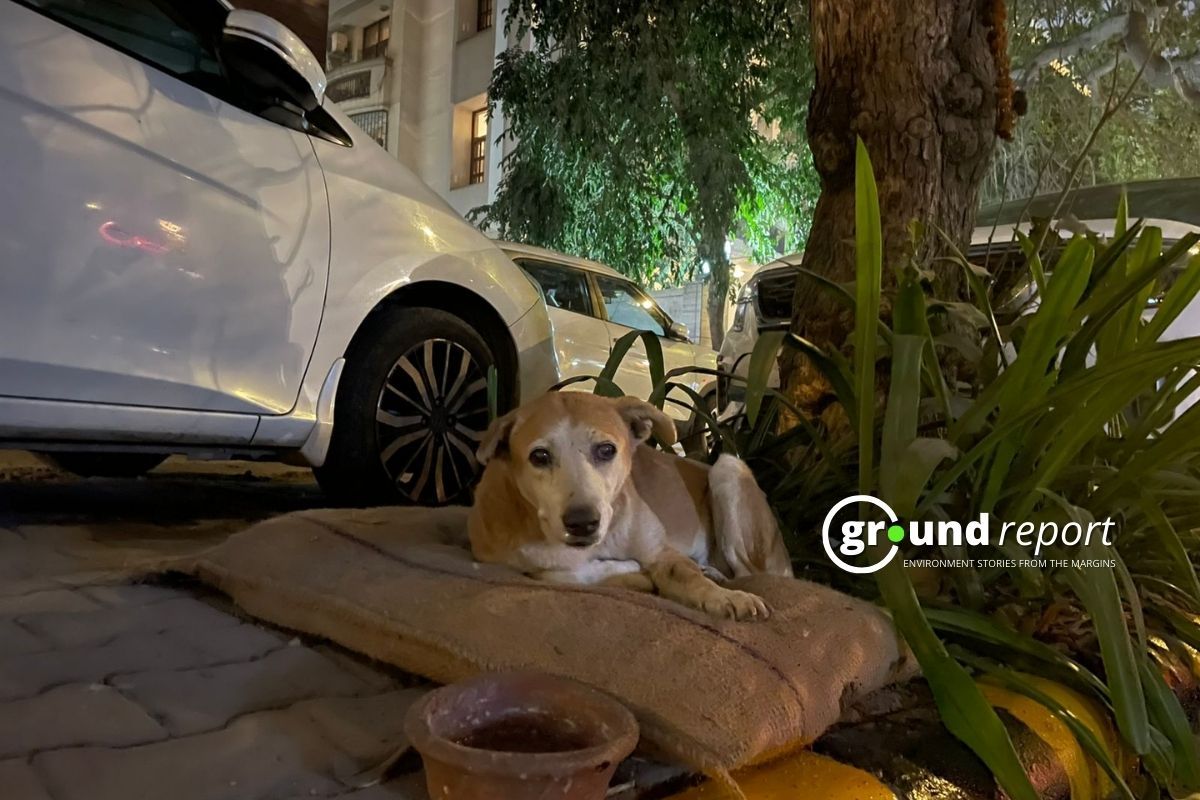Sanjay Van is part of the South Central Ridge of Mehrauli, Delhi. It is on the part of the Aravalli Hills spread over 800 km, which enters Delhi through Gujarat, Rajasthan, and Haryana. This mountain range is believed to be 1500 million years old.
The Aravalli range has been completely ruined due to continuous urbanization. In Rajasthan and Haryana, it has almost been eradicated by cutting it. The result of this has started impacting the monsoon rains in Delhi and its surrounding states.

How Sanjay Van is in Danger?
In the seventies, the Delhi Development Authority protected an area of 784 hectares to save the Aravallis in Delhi, which is today known as Sanjay Van. But now in the year 2022, the same DDA wants to commercialize Sanjay Van, which is threatening the biodiversity here.
In fact, recently the Lieutenant Governor of Delhi Vinay Saxena visited Sanjay Van and ordered the DDA to identify some green patches here where community halls can be made for holding national and international meetings. Apart from this, he ordered to make basic amenities like open toilets, some cafes, shops, and viewpoints so that people can come to Sanjay Van and enjoy nature. The Lieutenant Governor has also ordered arrangements for recreational activities like paragliding, cycling, etc.
Why are people opposing this plan?
Sanjay Van is a protected area, many trees will have to be cut for construction here. Due to adventure activities and conferences, people will come and visit here, which will make it impossible to save the environment from human interference. Every day 10,000 to 15,000 people already come to Sanjay Van for a morning walk and jogging. It is one of the few dense green areas in Delhi. Its commercialization will prove to be suicidal in Delhi already reeling under extreme weather.
It is necessary that Sanjay Van should be reserved, keeping it away from human interference. Indigenous trees should be planted here and the wild animals living here should be left alone.
Sign a petition to #SaveSanjayVan
Many people are coming forward to save Sanjay Van. People are writing an email to Lieutenant Governor Vinay Saxena and appealing to cancel the development plan of Sanjay Van.
You too can play a role in saving Sanjay Van by filing an online petition. You can send an email to the Lieutenant Governor by visiting the link given below.
Sanjay Van is not just a forest, it is a boon for a city like Delhi which is constantly turning into a concrete jungle. Let us tell you more about Sanjay Van.
Why Sanjay Van in Delhi is Important?
Sanjayvan is a reserved forest under the Indian Forest Act 1927.
Heritage
The forest once the hunting range of Firozshah Tughlaque provides a natural habitat for Blue Bulls, Golden Jackals, small lizards to big Lizard like Monitor, Snakes, and small to big birds like Grey & Purple Herons and Peacocks. The brand ambassadors of insects the butterflies are fluttering everywhere in the forest.
There are 11th-century old ruins of the wall of Lalkot fort / Quila Rai Pithora ( Prithviraj Chauhan) on a height towards Mehrauli. One has to climb to reach the top of this wall to enjoy the magnificent aerial view of the ridge forest. Nearby on its periphery touching Mehrauli is Ashique Allah Dargah- Nazaria peer and an old well.
There are a variety of resident, passage migrant, and migratory birds. Some of the rare birds recorded are Golden Orioles, crested pied cuckoos, Asian Paradise Flycatcher & Eurasian Sparrow Hawk. Sanjay van is a paradise for bird watchers & has the potential of becoming a bird sanctuary. Besides the recent first sighting of a striped Hyena, Asian Paradise Flycatcher has nested at SV for 35 years.
FLORA
Being a part of Aravali, SANJAY VAN is having tracks that are slightly elevated with rocky landforms. This semi-arid habitat encourages the growth of thorny Acacias.

NATIVE TREES
The common native trees are Ronjh ( Acacia leucorrhoea), Hingot ( Balanites roxburghii), Bistendu (Diospyroscordifolia ), and Jal (Salvedora oleoides) . Desi Keekar ( acacia nilotica ), Khair ( Acacia catechu) and Khejdi/Jhand ( Prosopis cineraria) are left only a few in the forest. Among these trees are the stunted/ bushy growths of thorny Heens ( Capparis sepiaria ),Taint/Kareel ( Capparis deciduas ) ,Jungli Karonda ( Carissa spinarum), & Ber ( Zizyphus mauritiana ) etc.
Keep Reading
Part 1: Cloudburst in Ganderbal’s Padabal village & unfulfilled promises
India braces for intense 2024 monsoon amid recent deadly weather trends
Support us to keep independent environmental journalism alive in India.
Follow Ground Report on X, Instagram and Facebook for environmental and underreported stories from the margins. Give us feedback on our email id greport2018@gmail.com.
Don’t forget to Subscribe to our weekly newsletter, Join our community on WhatsApp, and Follow our YouTube Channel for video stories.










